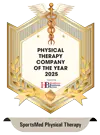What is Blood Pressure?
When your heart beats, it pushes blood through the body delivering blood and nutrients to its tissues. As blood travels, it pushes against blood vessels, this is called blood pressure.
How is it measured?
Blood pressure levels can be taken by a machine or manually by a trained professional using a cuff and stethoscope. Readings will come with two numbers – the top number, systolic, and the bottom number diastolic.
Systolic blood pressure is the highest number and is a measure of the pressure exerted as the heart muscle contracts forcing blood out of the heart.
Diastolic blood pressure is the bottom number and is a measure of pressure between heart beats when the heart muscle expands and blood reenters.
Keep in mind that blood pressure levels can be affected by many factors including:
- Body position
- Stress level
- Medications such as Diuretics, Beta Blockers, some Antidepressants,
- Caffeine
- Dehydration
- Personal fitness levels
- Time of day(Usually lowest at night)
- If taken after physical activity
Blood pressure levels will vary from person to person and what is ‘normal’ for one may be high or low for another, generally speaking, blood pressure is considered ‘normal’ if it is 120/80 (read 120 over 80) or lower.
If you have any questions, or want a consultation with a professional, feel free to call, or schedule an appointment online at any of our Bergen County or Passaic County offices in New Jersey. Choose from Glen Rock, Franklin Lakes, Fair Lawn, Ridgewood/Ho-Ho-Kus, and/or Clifton – we make it possible for you to visit any of our offices at your convenience.
Working out and Blood Pressure Levels
One of the best ways to keep blood pressure levels regulated is to workout consistently.
If you are taking blood pressure readings DURING exercise, it is normal for the Systolic to jump up while the Diastolic changes little if at all. AFTER exercise both Systolic and Diastolic should stabilize, but in some, drops may be sudden and cause lightheadedness and possible fainting. For this reason, enter an exercise program gradually to allow the body to adjust. Overtime, regular activity will strengthen the heart and make it more efficient, thus stabilizing blood pressure.
Aerobic vs Anaerobic Exercise
Exercises fall into two main categories – aerobic and anaerobic. In the most basic sense, aerobic exercise is that which requires oxygen and anaerobic is that which does not.
Aerobic
Aerobic exercises rely on energy pathways that utilize oxygen to create energy in the form of ATP. This system is slower than the anaerobic system but will last longer. Exercises that fall in this category include endurance exercises such as walking, light jogging, dancing, cycling, and most workouts that fall under the term ‘cardio.’
Anaerobic
During anaerobic exercise, muscle cells rely on energy pathways that do not require oxygen and instead break down carbohydrates in a process called glycolysis to create energy in the form of ATP. As a result of glycolysis, there is waste, called lactic acid, build up as exercise continues which decreases the ability of muscles to fire effectively (fatigue). Exercises in this category do not last long and include weight training, interval training with sprints, and most sports.
NOTE – The body is NEVER either totally aerobic or anaerobic, but rather it switches between the two depending on the task being completed. For example, if you start jogging at an easy pace where breathing comes normally, this is utilizing an aerobic energy pathway, and as you pick up pace and start losing the ability to talk normally, the body will be switching into an anaerobic pathway.
Generally speaking, if you have high blood pressure, you should exercise mostly in an aerobic state, as anaerobic activity increases stress, heart rate, and blood pressure much more than aerobic activity. If you normally do anaerobic activity such as weight training and also have high blood pressure, it is a good idea to check your pressure BEFORE beginning activity and not partaking at all if over 140/90 or above your normal range. For better more personalized recommendations, be sure to check with a medical professional.
Do you, or someone you know suffer from high or low blood pressure? We can help with a simple consultation.



